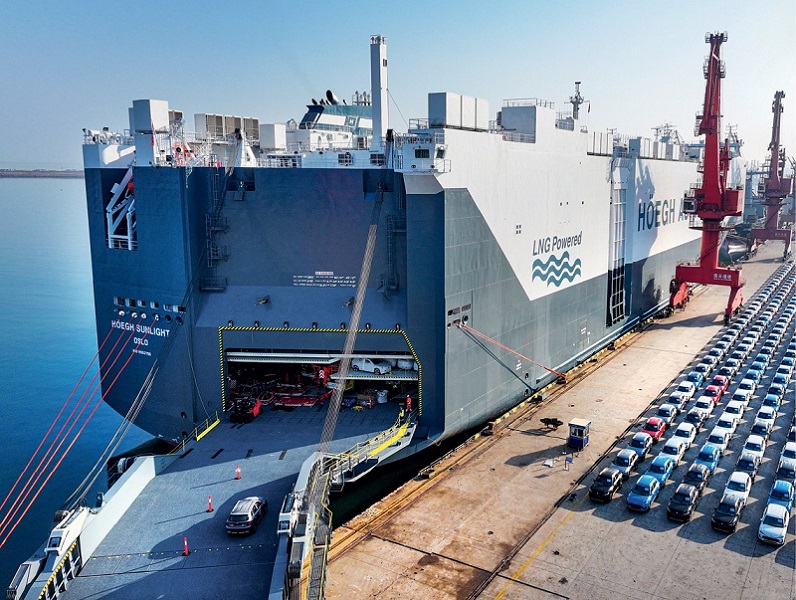China’s five-year plans crystallize a governance model that merges long-term strategic vision with adaptive execution.
As China prepares to unveil its 15th Five-Year Plan in 2026, policymakers, investors, and scholars around the world are watching closely. For over 70 years, these plans have guided the country’s economic and social development, serving as China’s primary tool for articulating long-term objectives and coordinating action across a vast and complex national landscape.
In an era of geopolitical uncertainty, rapid technological change, and intensifying climate pressures, the five-year plan remains one of the clearest windows into China’s strategic priorities. But it is also more than that. The planning model itself – combining long-term vision with mechanisms for short-term adaptation – offers a distinctive approach to governance that merits greater global understanding.

Dozens of UBTECH humanoid robots make a stunning debut at the Zeekr's 5G smart factory in the Qianwan New Area, Ningbo, Zhejiang Province, in March 2025, conducting multi-task collaborative training in an industrial setting.
From Resilience to Renewal
The 14th Five-Year Plan (2021–2025) marked a turning point in China’s development trajectory. It emphasized technological self-reliance, decarbonization, and a “dual circulation” economic model that sought to balance internal consumption with external openness. The plan’s implementation coincided with unprecedented external shocks – COVID-19, rising geopolitical tensions, and supply chain disruptions, which also illustrated the planning system’s ability to pivot while staying focused on long-term goals.
China’s policymakers responded with a mix of flexibility and discipline. Adjustments were made to address real estate instability, youth unemployment, and local government debt, even as core themes – such as innovation and green development – remained firmly in place. This capacity for mid-course correction is one of the system’s defining strengths.
As the 14th Five-Year Plan enters its final stretch, early indicators suggest that the 15th Plan will build upon many of the themes already in motion while responding to new economic and geopolitical realities. Likely areas of focus may include – artificial intelligence and advanced manufacturing, green finance and sustainability, demographic adaptation, improving healthcare and rural education equity, capital market reform, and global development partnerships, among others.
These are not simply technocratic goals, but also strategic responses to long-term shifts in China’s economic structure, its place in the global order, and the evolving needs of its population.
Long-Termism as an Operational Principle
China’s five-year plan model is often contrasted with policymaking systems in Western democracies, where priorities may shift dramatically with each election cycle. The advantage of the Chinese approach lies in its ability to set consistent national objectives that transcend short-term political pressures. For businesses and investors, this translates into greater certainty. For policymakers, it enables coordinated execution across ministries, provinces, and sectors.
However, continuity is not to be confused with rigidity. In recent years, the Chinese planning process has become more dynamic. Annual work reports, policy updates, and localized pilot programs allow for flexibility within the overall strategic framework. This capacity to combine direction with adaptability is especially valuable in a world where shocks – from pandemics to climate events – are increasingly frequent and far-reaching.
Few governments today have the ability – or the institutional mechanisms – to commit credibly to 10-, 20-, or even 30-year national goals. China’s planning framework, anchored in five-year increments but often oriented toward longer horizons, provides a unique platform for long-term policy continuity.
This is particularly evident in areas such as infrastructure, basic research, and clean technology, where returns may take decades to realize. Early investments in quantum computing, biotech, space exploration, and renewable energy were all signaled in prior plans and supported over multiple cycles. Such long-termism allows for the accumulation of expertise, the nurturing of ecosystems, and the reduction of policy risk – key factors in attracting both domestic and international capital.
China’s five-year plans are often assumed to be top-down exercises, but they are, in fact, the product of extensive consultation. Input is solicited from a wide array of stakeholders: ministries, local governments, academic institutions, and increasingly, private-sector firms and international partners. This consultative process helps align the national vision with local realities and sectoral needs.
The five-year plan also serves as a powerful signaling tool. Sectors highlighted in the plan – such as electric vehicles, digital health, or smart logistics – often see accelerated resource allocation and policy support. For foreign companies and investors, the plan thus offers critical insights into where opportunities may lie, and where regulatory or strategic headwinds may emerge.
No system is without its flaws. Critics of central planning point to risks of overreach, misallocated capital, or insufficient responsiveness to entrepreneurial dynamism. These risks are real and acknowledged by Chinese policymakers themselves. The challenge going forward will be to balance central guidance with greater market flexibility, and to ensure that innovation continues to flourish in response to not just policy incentives, but also market signals and individual initiative.

The world's largest and most eco-friendly car carrier, the Höegh Sunlight, docks at the automobile export terminal in the Port of Lianyungang, east China’s Jiangsu Province, on January 17, 2025. It will be loaded with 1,770 MG vehicles from SAIC Motor, and bound for major European ports.
Global Impact and Lessons Beyond China
The implications of China’s planning system extend beyond its borders. From supply chains to climate outcomes, the decisions enshrined in the five-year plans have global resonance. China’s pledges under the 14th Five-Year Plan to peak carbon emissions by 2030 and achieve neutrality by 2060, for example, are integral to the world’s climate calculus. Meanwhile, the country’s emphasis on industrial upgrading, digital infrastructure, and clean energy is helping to shape policy debates from Brussels to Washington, and to Jakarta.
As more countries grapple with how to manage long-term transitions – whether in energy, health, or technology – China’s five-year plan model is attracting new interest. While few Western-style democracies are likely to adopt the system wholesale, the idea of combining vision with coordination and planning with flexibility is gaining traction. Even in highly market-driven economies, there is a renewed appetite for strategic policymaking that can tackle generational challenges.
Ultimately, China’s five-year plans reflect a governance philosophy centered on strategic intent, continuity, and alignment. While the model has evolved over time – from command economy blueprints to hybrid planning frameworks – it remains a pillar of China’s policy architecture.
For international observers, the task is not simply to dissect the plan’s content, but to understand its function: as a roadmap of national priorities, a coordination mechanism, and a signal of political will.
The 15th Five-Year Plan’s value will lie not just in what it contains, but in what it enables: a sustained commitment to national direction amid global uncertainty. That alone is increasingly rare – and increasingly valuable – in the world today. 
JOHN QUELCH is executive vice chancellor, American president and distinguished professor of social science at Duke Kunshan University in China and the John deButts professor of the practice at Duke University’s Fuqua School of Business in the United States.